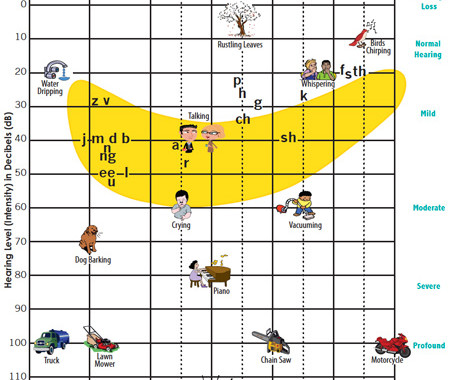Click here to see the current cochlear implant criteria.

This is an audiogram. Your hearing is plotted onto this graph (The quietest points you can hear). You can see the levels of hearing loss down the right side of the graph. The frequencies (different sounds) are shown along the top of the graph: think of it like a piano, low to high pitches from left to right.
The pictures represent where on the audiogram those sounds lie. This might help to bring ‘real life’ context to the audiogram.
Typically if you plot your hearing loss on the audiogram, anything above the line cannot be heard. And anything below the line can be heard. It may help you to visualise this further by shading in the area above the hearing loss to show this is inaudible.
Many other conditions, such as balance problems, syndromes and diagnoses have hearing loss as a symptom. But often healthy people can suffer with hearing difficulties with no other comorbidity.
A hearing loss is an inability for the sound to get through the ear to the brain. The ear is divided into different areas: Outer; Middle & Inner. Depending on where the problems are, depends on what hearing provision will be offered. The purpose of the cochlear implant assessment is to see if an implant is the best type of hearing provision for you. This is not always the case and we can discuss other options instead.